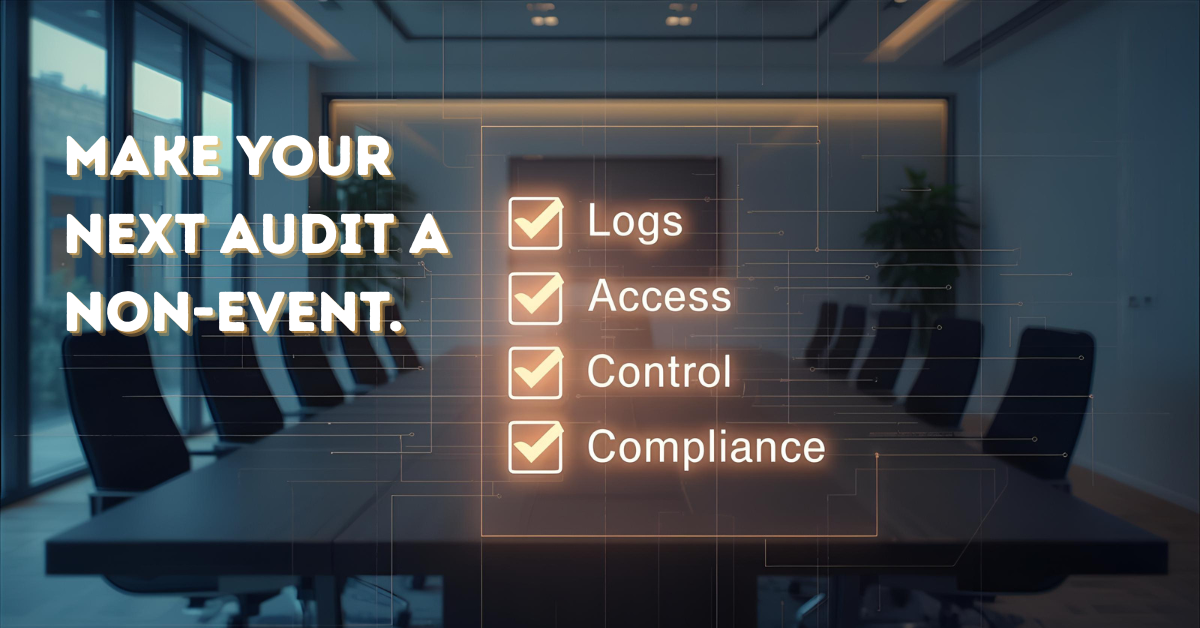How Proactive Security Prevents Audit Nightmares and Saves You Millions

October 28, 2025

In 2025, with cybersecurity topping global risk charts, organizations can no longer treat compliance and audits as reactive checkbox tasks. Auditors are demanding deeper proof of controls, while attackers evolve relentlessly.
The result: falling behind on security invites audit disasters, and the financial, legal, and reputational costs can be staggering.
This post explores how adopting a proactive security posture is your best defense against audit failures. We'll show how auditing isn't a one-time exercise, but part of a continuous security journey, and how the right approach can save you millions.
The Rising Stakes: Cyber Risk, Audit and Compliance in 2025
Cybersecurity is not a niche concern, but actually central to how audit functions assess risk. According to The Institute of Internal Auditors' recent report, 73% of audit practitioners worldwide list cybersecurity among their top five risks. In parallel, ManpowerGroup's 2025 Audit Priority Survey shows that digital risk, generative AI and technological change are reshaping audit priorities more than ever.
Meanwhile, cyber threats are becoming increasingly sophisticated. Ransomware gangs use AI to craft tailored attacks. Cloud misconfigurations, supply chain exploits and insider risks are common breach factors. Auditors expect visibility into these areas beyond on-paper statements.
If you only prepare for audits when they're looming, you risk:
- Incomplete or outdated documentation
- Gaps in controls or evidence
- Surprise findings that lead to fines
- Extended remediation time
- Loss of trust from clients or regulators
You're playing defense with one hand tied behind your back.
Audit Nightmares: What They Look Like
Here's how audit failure often unfolds:
| Scenario | Audit Problem | Consequence |
| Missing logs | No proof that security policies were enforced | Findings, penalties |
| Unauthorized users | Access granted beyond roles (privilege creep) | Control failures |
| Weak incident history | No records of response or remediation | Audit questions credibility |
| Legacy systems | Unsupported software without patches | Non-compliance with control frameworks |
| Fragmented documentation | Policies in one folder, logs in another | Audit demands time-consuming consolidation |
With regular security audits, you can identify insider threats, expose shadow IT and vulnerabilities that might otherwise fly under the radar. Using audits not just for compliance but for risk management helps organizations shift from a reactive posture to strategic resilience.
An audit failure isn't just a report, but a window into how weak your security is in public view.
Why Proactive Security is Profitable
Investing in proactive security is often seen as a cost overhead. In reality, it prevents far greater costs downstream. An ActualTech Whitepaper on The Importance of Proactive Security outlines how detection, automation and remediation reduce incident costs and optimize operations.
Here's how proactive security combats audit risk and saves money:
- Continuoslydiscover gaps: no more waiting for annual reviews. Ongoing vulnerability scanning and continuous threat exposure management (CTEM) identify and fix weak points as they emerge.
- Maintain audit-ready evidence: When logs, changes and remediation records are recorded automatically, you always have a trail for auditors.
- Automate enforcement and response: Built-in policies, automatic patching and alert mean your system self-corrects or flags anomalies immediately.
- Reduce incident cost: A quick detection means a breach is contained before it spreads. That cuts data loss, downtime, legal exposure, and recovery costs.
- Boost stakeholder confidence: Clients, insurers, regulators... all prefer partners who can demonstrate continuous security maturity, not just yearly compliance.
As you build proactive controls, audit cycles shrink from months of scrambling to simple validations.
6 Steps to Prevent Audit Nightmares Through Proactive Security
Here's a roadmap:
- Baseline current posture: Conduct a discovery audit - policies, logs, systems, gaps. Treat it like a mock audit.
- Adopt CTEM (Continuous Threat Exposure Management): Shift from periodic scans to ongoing exposure identification.
- Automate evidence collection: Configure systems to log, version, record changes and archive with less intervention.
- Integrate security and compliance controls: For each regulatory requirement (HIPAA, PCI, SOC), embed preventive rules into access, segmentation, encryption and monitoring.
- Run incident simulations and drills: Test your response plan regularly. Use adaptive firewalls or intelligent systems that continuously evolve.
- Review and report regularly: Created dashboards for executives and auditors. Document improvements, exceptions and aging risks.
Over time, audits become snapshots of a mature, self-healing security ecosystem.
Real-World Edge: Proactive Audit Strategies in Action
In the SOC2 space, compliance is treated as continuous, not annual. Embedding compliance into operations is better than bolting before audits. Audits are also evolving across industries: Top cybersecurity audits now demand checks on AI systems, third-party risk, cloud configuration and zero-trust frameworks.
Some research even explores using language models (like GPT agents) to partially perform audit checks, flagging non-standard password policies or configuration deviations.
When audits and security evolve together, your posture becomes self-asserting.
Make Audit Readiness One of Your Growth Engines
If you're treating audits as fire drills, your security is catching up, not leading. The shift to proactive security isn't a luxury but essential for businesses, this and the coming years.
Let’s make your next audit a non-event. KairosIT can partner with you to:
-
Define a security baseline and gap assessment
-
Deploy continuous detection, response, and audit-only controls
-
Automate evidence collection and remediation
-
Plan for future audit expectations involving AI, zero trust, and cloud complexity